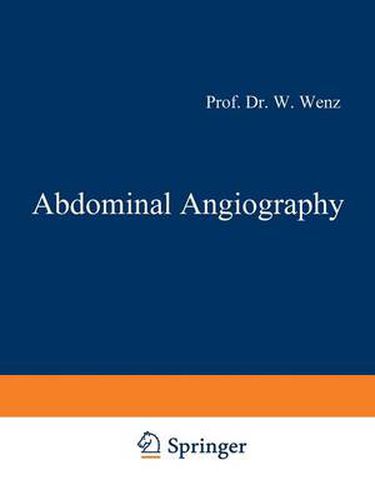Readings Newsletter
Become a Readings Member to make your shopping experience even easier.
Sign in or sign up for free!
You’re not far away from qualifying for FREE standard shipping within Australia
You’ve qualified for FREE standard shipping within Australia
The cart is loading…






This title is printed to order. This book may have been self-published. If so, we cannot guarantee the quality of the content. In the main most books will have gone through the editing process however some may not. We therefore suggest that you be aware of this before ordering this book. If in doubt check either the author or publisher’s details as we are unable to accept any returns unless they are faulty. Please contact us if you have any questions.
The brilliant yet simple idea of introducing a catheter percutaneously into an artery, without first dissecting it free, using a flexible guide wire, has led to a truly revolutionary breakthrough in abdominal x-ray diag nosis (SELDINGER, 1953). In the meantime, methods and techniques for injecting contrast media into various vessels have become largely standardized; innumerable publications have appeared which deal with every conceivable aspect of angiographic technique and interpretation. This volume is designed to present our experience with abdominal angiography. We deliberately refrained from any systematic discussion of the genitourinary tract, which has been adequately dealt with in the literature, also with respect to angiographic findings. Our interest in the retroperitoneal region is based mainly on its significance in differential diagnosis. In ten years of angiographic activity, our Department had made successful use of a simple technique which appears suitable also for smaller hospitals. We wish to point out its diagnostic potential and, at the same time, to outline its limitations. Our experience embraces 2804 abdominal angiograms, which we have classified according to clinical and morphologic anatomical criteria. Their diagnostic interpretation has been compared with the surgical or histopathological results. This may help others to avoid errors of the type which we discovered in our own work. Angiographic diagnosis requires not only familiarity with normal radiographic anatomy, but also specific knowledge of angiographic patho morphology. We have tried to identify those features which typify the individual findings and to derive therefrom valid generalizations with the aid of simple sketches.
$9.00 standard shipping within Australia
FREE standard shipping within Australia for orders over $100.00
Express & International shipping calculated at checkout
This title is printed to order. This book may have been self-published. If so, we cannot guarantee the quality of the content. In the main most books will have gone through the editing process however some may not. We therefore suggest that you be aware of this before ordering this book. If in doubt check either the author or publisher’s details as we are unable to accept any returns unless they are faulty. Please contact us if you have any questions.
The brilliant yet simple idea of introducing a catheter percutaneously into an artery, without first dissecting it free, using a flexible guide wire, has led to a truly revolutionary breakthrough in abdominal x-ray diag nosis (SELDINGER, 1953). In the meantime, methods and techniques for injecting contrast media into various vessels have become largely standardized; innumerable publications have appeared which deal with every conceivable aspect of angiographic technique and interpretation. This volume is designed to present our experience with abdominal angiography. We deliberately refrained from any systematic discussion of the genitourinary tract, which has been adequately dealt with in the literature, also with respect to angiographic findings. Our interest in the retroperitoneal region is based mainly on its significance in differential diagnosis. In ten years of angiographic activity, our Department had made successful use of a simple technique which appears suitable also for smaller hospitals. We wish to point out its diagnostic potential and, at the same time, to outline its limitations. Our experience embraces 2804 abdominal angiograms, which we have classified according to clinical and morphologic anatomical criteria. Their diagnostic interpretation has been compared with the surgical or histopathological results. This may help others to avoid errors of the type which we discovered in our own work. Angiographic diagnosis requires not only familiarity with normal radiographic anatomy, but also specific knowledge of angiographic patho morphology. We have tried to identify those features which typify the individual findings and to derive therefrom valid generalizations with the aid of simple sketches.